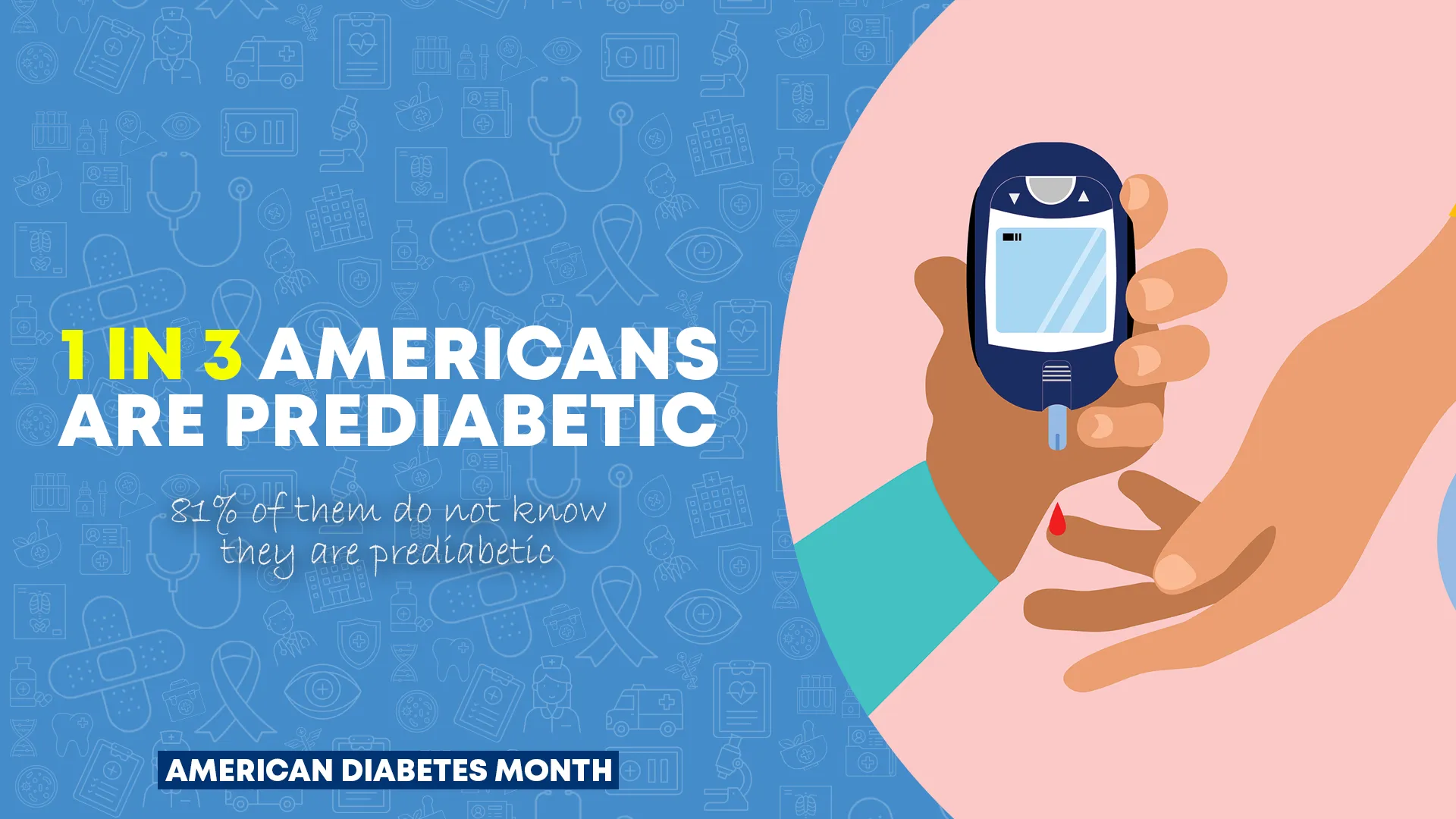November is American Diabetes Month and an opportunity to highlight the condition that now impacts the lives of over 1 in 10 Americans according to the CDC.
The prevalence of diabetes continues to rise in America and is it likely you or someone living with diabetes. Because of this, the National Institute of Diabetes and other organizations use the month of November to raise awareness of the dangers of diabetes. It is also a great opportunity to think about what changes you should make in your own life to lower your diabetes risk.
The Importance of a Diagnosis
Regular visits to your primary provider can help you stay on top of your health including making it possible to catch an early diagnosis of diabetes. Among the 37.3 million Americans living with diabetes in 2022, it is believed 8.5 million have not yet been formally diagnosed. They may be living with diabetes, but without proper diagnosis and care, they are not managing their diabetes.
How Does Diabetes Affect Your Overall Health?
Diabetes, particularly when it is poorly managed, has wide-reaching effects on your overall health. Diabetes causes high blood sugar, which can damage blood vessels and create complications for your heart and cardiovascular system.
But high blood sugar damages more than your heart. It can cause damage to nerves in your extremities, like your feet. This can cause a loss of feeling in your feet, making even small injuries or infections on your feet harder to spot. Ultimately, an unnoticed infection can lead to serious complications.
Nerve damage and high blood sugar caused by diabetes can also create issues for your hearing and vision.
Where are the Numbers Heading?
While new cases may have slowed in total, diabetes continues to grow in patients under age 20. Based on how quickly the rate of young diabetes patients increased from 2002 to 2017, studies have hypothesized that over 500,000 patients under age 20 could be living with diabetes by 2060.

Because of this increased risk in our youth, the American Family Physicians organization emphasizes the importance of testing children for diabetes. Statistics on the prevalence of diabetes in youth indicate that about 283,000 Americans under the age of 20 are living with diabetes.
Children are identified as being at risk if they belong to two or more of the following categories: “history of type 2 diabetes in a first- or second-degree relative, belonging to a high-risk ethnic group (defined on ADA website), acanthosis nigricans, hypertension, hyperlipidemia, or polycystic ovary syndrome.”
The information the CDC released in 2020 detailed that 1 in 3 Americans are estimated to be “prediabetic.” This is indicated by higher than normal blood sugar levels but not to a point where symptoms are present. Prediabetes can initiate damage to your heart, blood vessels, and kidneys which are common in diabetes patients. However, a prediabetes diagnosis does not guarantee you will eventually become diabetic. A timely change in lifestyle behaviors can help reverse this behavior.
What Changes Should You Make?
You can start to get a simple idea of your risk of diabetes by taking the ADA’s risk test.
The changes you can make to lower your diabetes risk are simple: lose weight, exercise more, and watch what you eat. These can be easy things to say, but difficult to commit to. However, your health is important and you should make it a top priority.
The Mayo Clinic provides similar advice to those who may have already been diagnosed as prediabetic. Considering an estimated 1 in 3 Americans may be prediabetic, it is best everyone follows these simple guidelines.
- Eat healthy foods
- Get at least 150 minutes of moderate aerobic physical activity a week, or about 30 minutes on most days of the week
- Lose excess weight
- Control your blood pressure and cholesterol
- Don’t smoke


